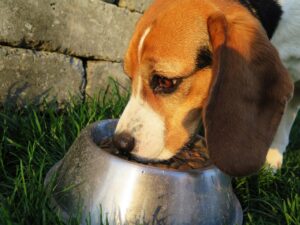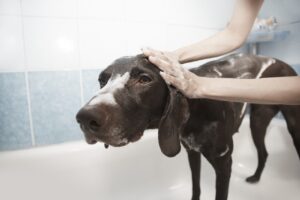
In recent years, the raw diet for dogs has gained significant popularity among pet owners. This dietary approach, often referred to as the BARF diet (Biologically Appropriate Raw Food or Bones and Raw Food), aims to mimic the natural feeding habits of wild canines. While some proponents argue that a raw diet can lead to numerous health benefits, others raise concerns about nutritional balance and safety. This article delves into the pros and cons of feeding your dog a raw diet, providing insights to help you make an informed decision.
Understanding the Raw Diet
The raw diet for dogs typically consists of uncooked meat, bones, fruits, vegetables, and sometimes supplements. The idea is to offer a diet that closely resembles what an animal would consume in the wild. Advocates of the raw diet believe it provides essential nutrients in their most natural state, which may be beneficial for a dog’s health.
Components of a Raw Diet
1. **Raw Meat:** This forms the primary component of the raw diet, including beef, chicken, turkey, and lamb. Organ meats like liver and kidneys are also included for their nutrient density.
2. **Raw Bones:** Bones are included for calcium and phosphorus, as well as for dental health benefits.
3. **Fruits and Vegetables:** These provide fiber, vitamins, and antioxidants. Commonly used options include carrots, apples, and leafy greens.
4. **Supplements:** Some raw diets may include supplements like fish oil, vitamins, and minerals to ensure complete nutrition.
The Pros of a Raw Diet
Improved Digestion and Nutrient Absorption
One of the primary benefits cited by raw diet advocates is improved digestion. Raw food is thought to retain more natural enzymes and nutrients because it is not subjected to cooking processes that can degrade these components. This may lead to better nutrient absorption and improved gut health.
Enhanced Coat and Skin Health
A raw diet is often credited with promoting a shinier and healthier coat. The natural oils found in raw meats and fish can contribute to skin health, potentially alleviating conditions like dryness, itching, and flaking.
Increased Energy Levels
Many dog owners report increased energy levels and vitality in their pets after switching to a raw diet. The theory is that the high protein content and absence of fillers in raw foods provide dogs with a more efficient source of energy.
Improved Dental Health
Chewing on raw bones is believed to help clean teeth and reduce plaque buildup, leading to better dental health. This natural method of teeth cleaning can reduce the risk of periodontal diseases.
Allergy Relief
Some dogs experience relief from food allergies and sensitivities when switched to a raw diet. Eliminating processed ingredients and common allergens found in commercial dog foods may reduce allergic reactions.
The Cons of a Raw Diet
Potential for Nutritional Imbalance
One of the primary concerns about raw diets is the potential for nutritional imbalance. Without careful planning, a raw diet may lack essential nutrients or provide them in inappropriate ratios, leading to deficiencies or excesses that can affect a dog’s health over time.
Risk of Bacterial Contamination
Raw meat can harbor harmful bacteria such as Salmonella and E. coli, which pose risks to both dogs and humans. Proper handling, storage, and preparation of raw foods are crucial to minimize the risk of contamination and foodborne illnesses.
Choking Hazards and Internal Injuries
While raw bones can benefit dental health, they also present choking hazards and the risk of internal injuries if not chosen carefully. Bones that splinter easily or are too small can cause blockages or damage to a dog’s digestive tract.
Time and Cost Considerations
Preparing a raw diet at home can be time-consuming and may require a significant investment in quality ingredients and supplements. Additionally, purchasing pre-packaged raw diets can be expensive compared to commercial dog food.
Veterinary Concerns
Many veterinarians express concerns about raw diets, particularly when not formulated with guidance from a veterinary nutritionist. There is ongoing debate within the veterinary community regarding the safety and efficacy of raw diets, with some professionals cautioning against them due to the aforementioned risks.
Balanced Raw Diet: Best Practices
If you decide to pursue a raw diet for your dog, it’s essential to follow best practices to ensure it is safe and nutritionally balanced.
Consult with a Veterinary Nutritionist
Before transitioning your dog to a raw diet, consult with a veterinary nutritionist. They can help devise a balanced meal plan tailored to your dog’s specific needs, ensuring all essential nutrients are adequately covered.
Practice Safe Handling and Hygiene
To minimize the risk of bacterial contamination, practice safe food handling techniques. This includes thoroughly washing hands and surfaces after handling raw meat, using separate cutting boards for meat and other foods, and storing raw foods at proper temperatures.
Select Appropriate Ingredients
Choose high-quality meat from reputable sources to ensure safety and nutritional value. Avoid bones that are too small or brittle, and introduce new foods gradually to monitor for any adverse reactions.
Monitor Your Dog’s Health
Regular monitoring of your dog’s health is crucial when feeding a raw diet. Look for changes in weight, coat condition, energy levels, and stool consistency. Regular veterinary check-ups can help ensure your dog remains healthy on a raw diet.
Conclusion
The raw diet for dogs offers both potential benefits and risks. While it may improve digestion, coat health, and energy levels, it also poses challenges such as nutritional imbalances and bacterial contamination. Ultimately, whether to feed your dog a raw diet is a personal decision that should be made with careful consideration and professional guidance. By understanding the pros and cons and implementing best practices, you can make an informed choice that aligns with your dog’s health needs and lifestyle.
#ChatGPT assisted in the creation of this article.







